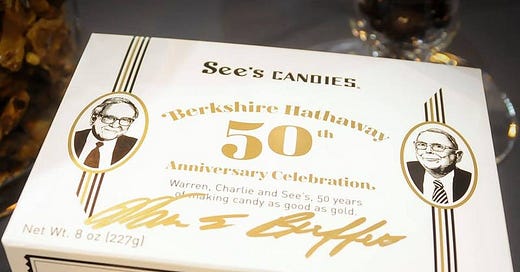See's Candies
Issue 21| 1972 Part 1 - The acquisition of See's Candies in 1972 marked the beginning of Berkshire's focus on high-quality businesses and showcased the powerful partnership between Buffett & Charlie
It has been said that the elixir of life is a combination of Cherry Coke and Peanut Brittle. This has undoubtedly added to the longevity of Warren Buffett and Charlie Munger. Additionally, See's Candies has played a pivotal role in Berkshire, as the acquisition of See’s was seen as a watershed moment in Berkshire's rich history.
Charlie summed up the im…
Keep reading with a 7-day free trial
Subscribe to Becoming Berkshire to keep reading this post and get 7 days of free access to the full post archives.



